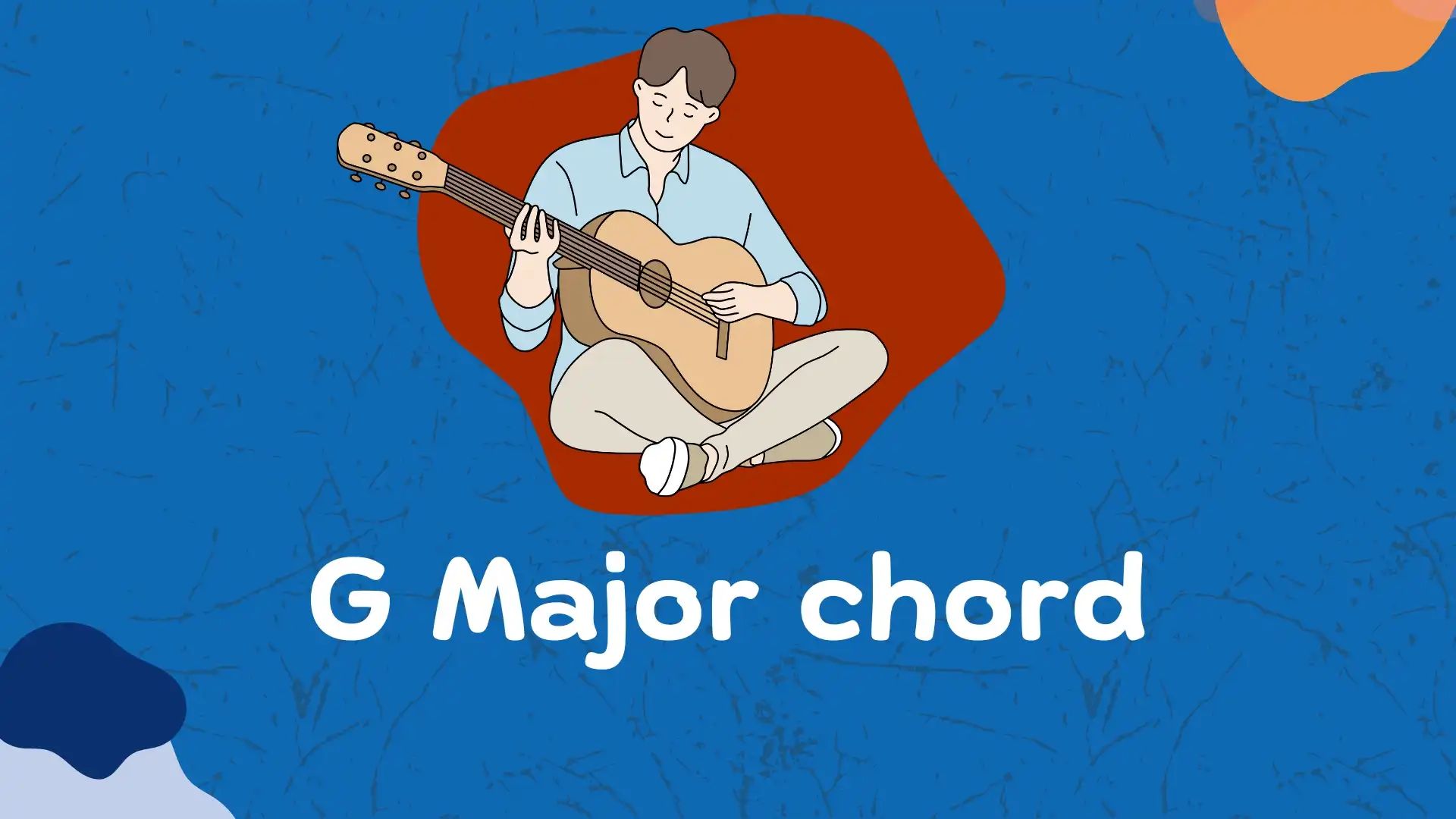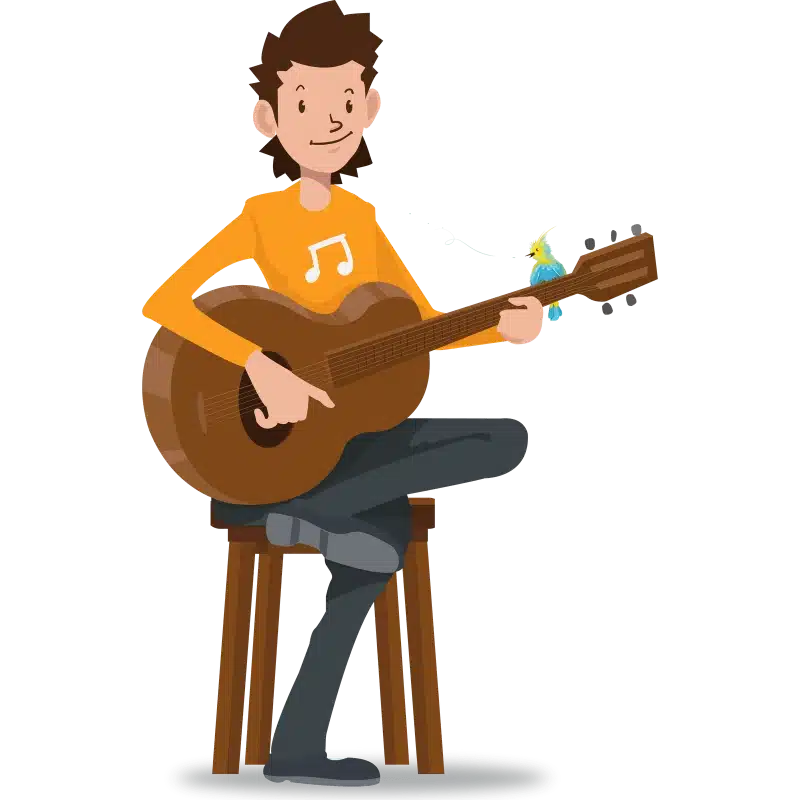- Play G major chord guitar for beginners
- How to play the G major chord on Guitar easily
- G major chord variation– 4 finger version
- G major chord variation–Barre chord version
- Open vs. Barre G major chord: which is better?
- Songs that use the G major and related chords
- Theory behind the G major chord in music
- Common mistakes when holding the G major chord
- Tips to transition smoothly between chords
- FAQs
Play G major chord guitar for beginners
One of the most played open chords on the guitar is the G major chord. To play this on guitar for beginners (open chords) all you have to do is place your fingers to hold G chord guitar.
This chord is played in a variety of styles to add different flavours to the song. This is another widely used chord in many songs and you can play thousands of songs just by mastering this chord. So, let’s try to play this chord in 3 simple steps.

The G major chord on guitar symbolizes happiness blending beautifully with the tunes of life’s melodies.
How to play the G major chord on Guitar easily
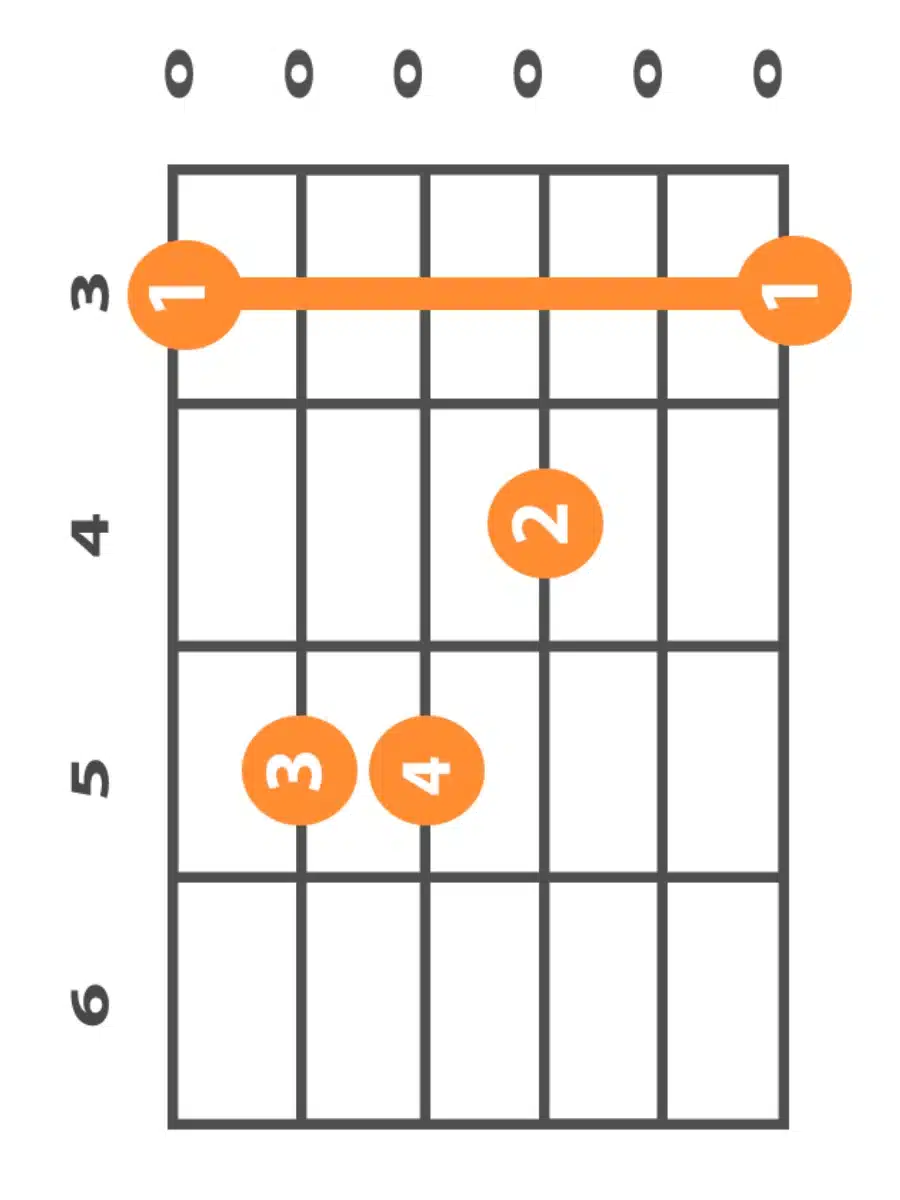
- Step 1: Stretch out your middle finger and press the 6th string at the 3rd fret.
- Step 2: Press the 5th string at the 2nd fret with your index finger.
- Step 3: Fold your ring finger to enable it to press the 1st string at the 3rd fret. The 4th, 3rd and 2nd strings are open.
Now, with your strumming hand, strike all the 6 strings. Now, you have just played the G major chord on guitar in the open position. Practice this G chord on your guitar with a few down strokes while holding this chord.
At first, it may be tough to hold these strings with your fingers. The ring finger may not press the 1st string correctly. A lot of patience and practice can correct this.
G major chord variation– 4 finger version
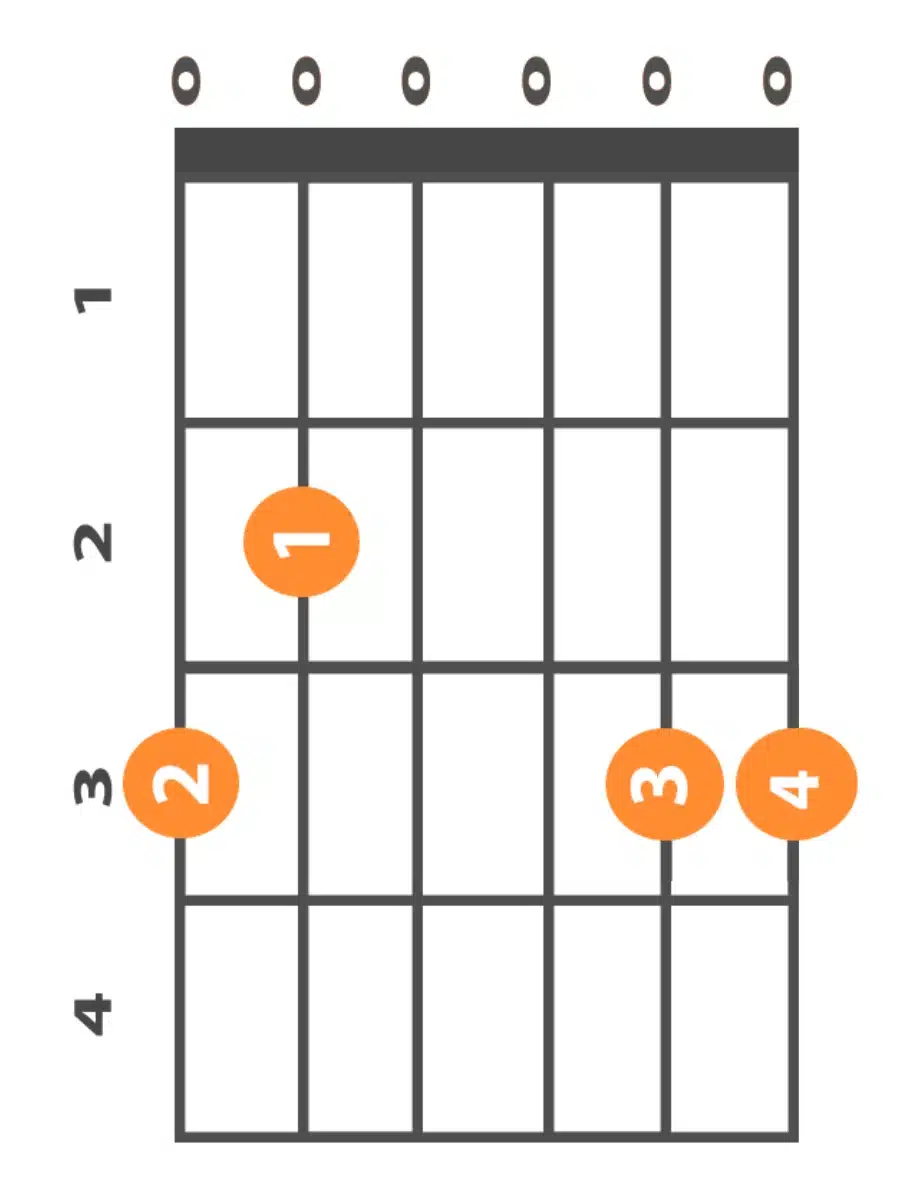
- Step 1: Stretch out your middle finger and press the 6th string at the 3rd fret.
- Step 2: Press the 5th string at the 2nd fret with your index finger.
- Step 3: Fold your ring finger to enable it to press the 2nd string at the 3rd fret. Now, the 4th and 3rd strings are left open.
- Step 4: Force your little finger behind the ring ringer to press the 1st string at the 3rd fret.
This is a commonly used G major chord finger position. It is easy to shift to other open chords like Cadd9, Dsus4 and Em7, where the ring and little fingers can stay at the same spot without moving at all.

Did You Know?
Were you aware that learning the G major chord notes, on the guitar is often one of the chords beginners pick up? This chord holds a role in well-known songs thanks to its adaptable and vibrant sound that appeals to guitar players across various genres from classic rock hits, to soothing folk melodies.
Here are some of the most frequently played open chords, along with the G major guitar chord.
- A minor
- C major / C major add 9
- D major / D suspended 4th
- E minor / E minor 7th
All these chords sound wonderful when played with the G chord. They are also the related chords in key of G major. To know about more different chord visit musicmaster.in
Now, let’s see how to hold the G major as a barre chord:
G major chord variation–Barre chord version
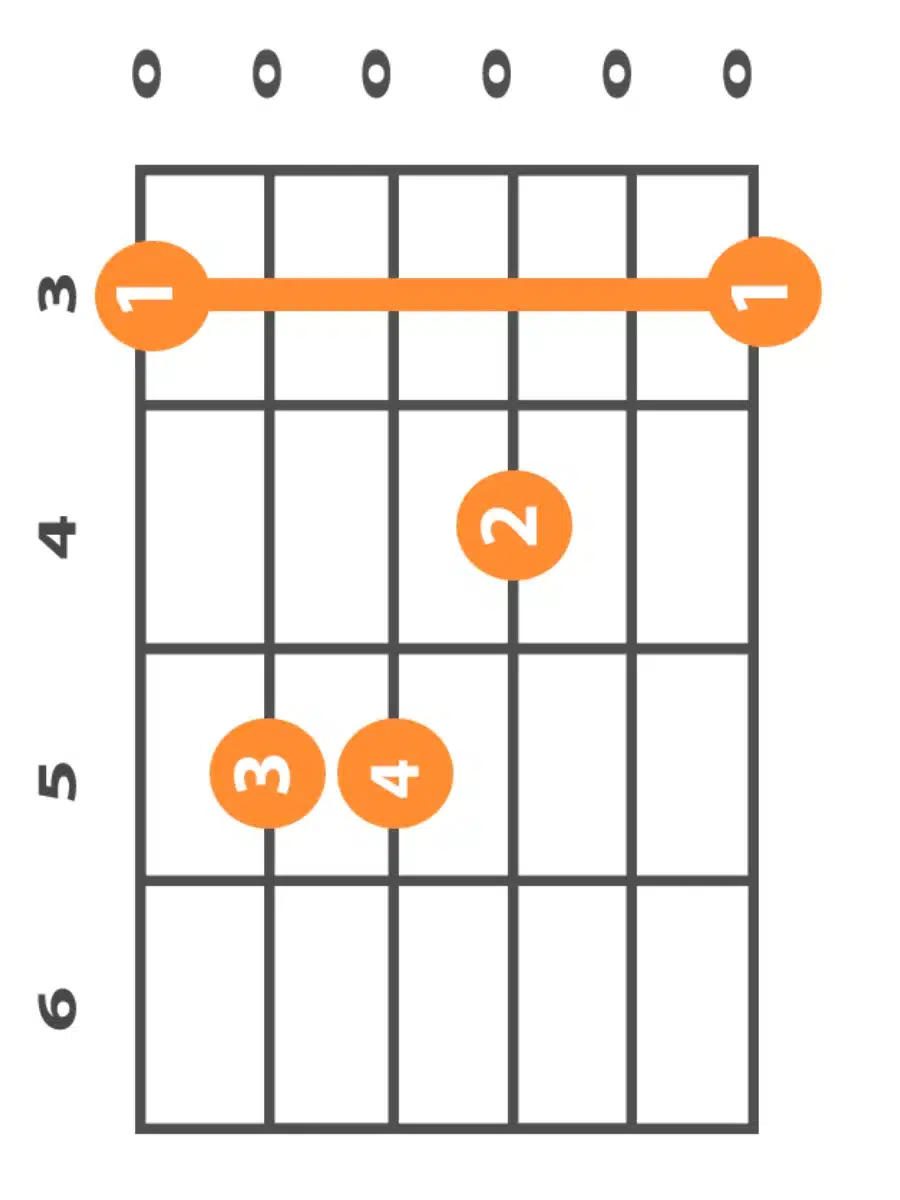
- Step 1: First, keep your ring and little fingers scrunched together and press the 5th and 4th strings at the 5th fret
- Step 2: Next, add your middle finger. Press the 4th string at the 4th fret.
- Step 3: Finally, bring your pointer forward, and press all the strings at the 3rd fret.
Open vs. Barre G major chord: which is better?
Both versions of the chord in g major, open and barred sound great! It all depends on the other chords played with these chords. Most times, the open chords in key of g major is used since it is simple, easy to shift and sounds best with other open chords like C major, D major, E minor, etc.
The barred chords G major chord finger position is also used if other barre chords are played, mostly in A major shape or sometimes in D major shape. The major advantage of using barre is the fact that it can be easily transposed to different keys. But the barre shape is very hard on our fingers, and it pains a lot!
The open position G major guitar chord is the very first chord shape that comes to mind for everyone, including experts and advanced players. Moreover, the open position is the most played version. Therefore, it is advised for beginners to play the chords in G major on guitar in the open position.
Songs that use the G major and related chords
Tamil songs
- Nee Kavithaigala – Maragatha Nanayam
- Eley Keechan – Kadal
- Un Vizhigalil – Maan Karathe
English songs
- Knocking On Heaven’s Door – Guns N’ Roses
- Hard Day’s Night – Beatles
- Good Riddance – Green Day
- Sweet Home Alabama – Lynyrd Skynyrd
Telugu songs
- O Rendu Prema Meghaalila – Baby
- Aradhya – Kushi
- Ye Mantramo – Andala Rakshasi
Hindi songs
- Jawani Janeman – Namak Halal
- Badi Sooni Sooni Hai – Mili
- Allah Ke Bande – Kailash Kher, Vishal Dadlani
Theory behind the G major chord in music
The G major guitar chord, like any other major chord is basically made of 3 notes take from the major chord. The chords in g major has the following notes: G, A, B, C, D, E and F#. The 1st, 3rd and 5th notes in this G major scale create the basic three note chord, known as a triad.
Based on this theory, the triad in the G major chord on guitar has the notes G, B and D. Hold the chord in g major the open position. Two of these G major chord notes are already held by our fingers on the 6th string at the 3rd fret (G) and the 5th string at the 2nd fret (B). The 4th string is left open, which is the 3rd note in the triad (D). The other notes you hear are just a repetition of the same 3 notes; they just sound higher in pitch.
No matter what position of the chords in g major you hold, whether it is the open position one or the barre chord, you’ll always find these three notes (G, B and D) held down by your fingers either in a higher or lower pitch.
Common mistakes when holding the G major chord
1. Fingers holding the 6th and 5th strings touches the other open strings
Whenever you hold the G chord guitar in the open position, you have to arch or bend our fingers so that the other open strings in-between are not touched by our fingers (especially the ones holding the 6th and 5th strings). Otherwise, you would wind up muting those strings and they will not sound clear. you will hear a ‘buzzy’ sound.
2. Finger holding the 1st string touches the open 2nd string
This happens more often than you’d like to admit. At times, the ring finger holding down the 1st string can accidentally mute the open 2nd string. This can also result in a muted sound and makes the open G chord guitar sound incomplete when you can’t hear that B string.
3. Strings held down are muted or let go when trying not to mute the open strings
By being too cautious not to mute the open strings, you may tend to mute the strings you want to be heard. You may even let go of the strings on which you want our fingers to be placed firmly. Such mistakes are also to be taken care of when you practice.
Tips to transition smoothly between chords
Try switching between the different chords in g major and back again. Remember to place all your fingers at the same time for each of the chords.
When you switch between two or more chords, focus on placing the fingers from the lowest/thickest string to the highest/thinnest one. This is the fastest and neatest way to shift between chords while strumming continuously.
Right method to practice G chord guitar
All these chords in g major key sound best when strummed beautifully with the help of a couple of great sounding strumming patterns. Explore various types of strumming patterns for open chords.
Always practice with a metronome set to a really low tempo (like 40-50 BPM) until you can easily switch between the chords. Later, you may slowly keep increasing the tempo by 5 BPM until you can play at around 100 BPM without muting the strings.
If you are looking for a qualified Guitar teacher, you can try a free trial class with a musicmaster. Click on this link to book a FREE GUITAR TRIAL CLASS.
Learn to play the following beginner chords:
- C Major Chord
- D Major Chord
- E Major Chord
- A Major Chord
- E Minor Chord
- A Minor Chord
- D Minor Chord
- F Major Chord
- B Minor Chord
FAQs
How to play a G major chord on guitar?
Start by placing your middle finger on the 6th string at the 3rd fret. Next, place your index finger on the 5th string at the 2nd fret. Leave the 4th, 3rd and 2nd strings open. Finally, bend your ring finger to place it on the 1st string at the 3rd fret. You can strike all 6 strings with your strumming hand to hear the G major chord in the open position.
Is the chords in G major easy to play?
One of the easiest open chord to transition and play on the guitar is the G major. It’s played a lot with other major/minor open chords, which makes this chord one of the most preferred open chords to play on the guitar as well.
What is the theory behind the G major guitar chord in music?
The chord is made up of 3 notes – G, B and D. These G major chord notes are the 1st , 3rd and 5th notes of the G major scale (G, A , B, C, D, E, F#). So, these 3 notes are held down by our fingers or let open if it’s on an open string. A combination of these 3 notes in any octave across the 6 strings form the G major chord.
What other chords sound good with G major?
Generally C Major, D major and E minor are played with the G Major chord notes. There are other related chords like A minor, B minor and even F# diminished that sound great when played together with this chord.
What songs use the G major chord extensively?
Here’s a list of songs where the G major chord is featured:
- Un Vizhigalil – Maan Karate
- Agayam Theepiditha – Madras
- Allah Ke Bande – Waisa Bhi Hota Hai Part II
- Ring Of Fire – Johnny Cash
- Me And Bobby McGee – Janis Joplin
- Leaving On A Jet Plane – John Denver

